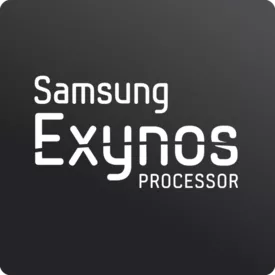MediaTek Dimensity 9000 Plus vs Samsung Exynos 1380
SOURCE ARTICLES
Dimensity 9000 Plus vs Dimensity 9000: tests and benchmarks
nanoreview.net
The Dimensity 9000 Plus has advantages over the Dimensity 9000, including a higher GPU frequency, better AnTuTu scores, and a higher CPU clock speed. In benchmarks, the Dimensity 9000 Plus outperforms the Dimensity 9000 in both AnTuTu and Geekbench tests. The specifications of both chips are similar, with the Dimensity 9000 Plus having a slightly higher GPU frequency and more efficient memory. Overall, the Dimensity 9000 Plus is the better choice.
Dimensity 9000 vs. Snapdragon 8 Gen 1 Special Review: Performance/Energy Efficiency & more
www.gizchina.com
The Dimensity 9000 outperforms the Snapdragon 8 Gen 1 in terms of CPU performance, with higher scores in Geekbench 5. The GPU performance is slightly inferior to the Snapdragon 8 Gen 1, but the gaming performance is similar in actual games. The Dimensity 9000 also has better temperature control, running cooler than the Snapdragon 8 Gen 1 during gaming. In terms of power consumption and energy efficiency, the Dimensity 9000 has a lower power consumption and higher energy efficiency ratio. Overall, the Dimensity 9000 is a clear winner in performance and energy efficiency.
MediaTek Dimensity 9000 Plus review
versus.com
The MediaTek Dimensity 9000 Plus has a CPU speed of 3.2 GHz, 2.85 GHz, and 1.8 GHz. It uses big.LITTLE technology to switch between powerful and less powerful cores for performance and battery life optimization. It also has Heterogeneous Multi-Processing for utilizing all cores or a single core for different tasks. The L2 and L3 cache sizes are unknown, but larger caches result in faster performance. The clock multiplier controls the CPU speed.
Benchmark showdown: Snapdragon 8 Plus Gen 1 vs Dimensity 9000 Plus
The review compares the Snapdragon 8 Plus Gen 1 and Dimensity 9000 Plus chips. The Dimensity 9000 Plus performs better in CPU-heavy workloads, while the Snapdragon 8 Plus Gen 1 has a slight advantage in graphics performance. MediaTek's chip has a larger cache and performs well in multi-threaded workloads. Both chips have good sustained performance, but the Dimensity 9000 Plus performs better in power consumption optimization. The Snapdragon's Adreno GPU is more future-proof. Overall, both chips offer high performance for demanding users.
Snapdragon 8 Gen 2 vs MediaTek Dimensity 9000+: Qualcomm is the undisputed GPU king
The Snapdragon 8 Gen 2 outperforms the MediaTek Dimensity 9000+ in terms of GPU performance, making Qualcomm the undisputed GPU king. However, the Dimensity 9000+ remains competitive in CPU performance. Qualcomm also excels in AI capabilities, while MediaTek struggles to keep up. In terms of power consumption, the Snapdragon 8 Gen 2 has a lower maximum wattage. Overall, Qualcomm's chipset is the best Android SoC currently available, with MediaTek having a tough challenge ahead to catch up.
MediaTek Dimensity 9000+ Processor - Benchmarks and Specs
The MediaTek Dimensity 9000+ processor has been benchmarked and its specs have been revealed. It performs well in average benchmarks and has a range of features.
Qualcomm Snapdragon 8 Plus Gen 1 vs MediaTek Dimensity 9000 Plus: Neck and neck in every aspect
The review compares the MediaTek Dimensity 9000 Plus and Qualcomm Snapdragon 8 Plus Gen 1 chipsets. The Dimensity 9000 Plus has higher clock speeds and a larger system-level cache. It performs well in CPU-centric computational tasks but falls behind in GPU performance compared to the Snapdragon 8 Plus Gen 1. Both chipsets drain battery quickly and have similar power efficiency. The Snapdragon 8 Plus Gen 1 performs better in CPU throttling tests. In terms of graphics, the Snapdragon's Adreno GPU outperforms the Mali GPU in the Dimensity 9000 Plus. Overall, the Snapdragon 8 Plus Gen 1 is considered the better chipset.
Galaxy F54 shows what the Exynos 1380 chip is really capable of
The Galaxy F54, powered by the Exynos 1380 chip, outperforms the Galaxy A54 in terms of performance. It takes advantage of optimized software and offers impressive features like a 108MP camera, a 6,000 mAh battery, a 120Hz Super AMOLED display, and four major OS upgrades. With its aggressive launch price, the Galaxy F54 is a strong contender in Samsung's 2023 mid-range smartphone lineup.
Samsung Exynos 1380: specs and benchmarks
The Samsung Exynos 1380 is an 8-core chipset manufactured using a 5-nanometer process technology. It has 4 Cortex-A78 cores at 2400 MHz and 4 Cortex-A55 cores at 2000 MHz. In benchmarks, it scored 588,286 in AnTuTu 10 and 2819 in 3DMark Wild Life Performance. The GPU is Mali-G68 MP5 with a frequency of 950 MHz. It supports LPDDR5 memory with a frequency of 3200 MHz and has a maximum display resolution of 2960 x 1440. It also supports 5G, has a download speed of up to 3790 Mbps, and supports Wi-Fi 6 and Bluetooth 5.3.
What is the Samsung Exynos 1380? The mid-range chipset explained
The Samsung Exynos 1380 is a mid-range chipset with improved CPU and GPU performance. It features four Cortex-A78 CPUs and four Cortex-A55 CPUs, providing a 40% boost to load speeds and a 20% improvement in game load times. The Mali-G68 MP5 GPU offers stable gameplay performance and improved AR gaming capabilities. The chipset supports 200MP sensors and has an enhanced NPU for improved AI performance. It also offers support for up to 144Hz display refresh rates and better 5G connectivity. The Samsung Galaxy A54 5G, Galaxy F54, and Galaxy M54 are among the phones that use the Exynos 1380 chipset.
Samsung Exynos 1380 Processor - Benchmarks and Specs
The Samsung Exynos 1380 is a mid-range processor designed for Android smartphones and tablets. It features a combination of four Cortex-A78 performance cores and four Cortex-A55 power-saving cores. The integrated graphics unit is an ARM Mali-G68 MP5. The NPU's performance has been improved by 14% compared to its predecessor. The chipset supports displays with up to 144 Hz and Full HD+ resolution, cameras with up to 200 MPix, and has Wi-Fi 6 and Bluetooth 5.3 capabilities. It also supports both 5G-Sub6 and 5G-mmWave networks. The Exynos 1380 is manufactured using the 5-nm process. In benchmarks, it performs well in 3DMark, Geekbench, and Antutu tests.
Samsung Galaxy A54 (Exynos 1380) Performance Review!
The Samsung Galaxy A54, powered by the Exynos 1380, offers fast CPU performance but has a relatively weak GPU. It outperforms the Snapdragon 8 Gen 1 and is only slightly slower than the Snapdragon 8 Gen 2. However, it falls short in gaming, being slower than the Exynos 990 and Snapdragon 888. Overall, it provides snappy performance for most tasks but struggles with graphics-intensive games. The Exynos 1380 is a mid-range platform, not a flagship-class one. The Galaxy A54 is priced at RM1,899 / US$449.99 / £499 / A$697 / S$648.
+ 9
AI COMPARISON
Product Comparison: MediaTek Dimensity 9000 Plus vs Samsung Exynos 1380
| Feature | MediaTek Dimensity 9000 Plus | Samsung Exynos 1380 |
|---|---|---|
| Semiconductor Size | 4 nm | 5 nm |
| Total Clock Speed | 18.95 GHz | 17.6 GHz |
| CPU Threads | 8 threads | 8 threads |
| Max Memory Bandwidth | 60 GB/s | 51.2 GB/s |
| GPU Clock Speed | 850 MHz | 950 MHz |
| RAM Speed | 3750 MHz | 3200 MHz |
| Max Memory Size | 24 GB | 8 GB |
| Download/Upload Speed | 7000/2500 MBits/s | 3790/1280 MBits/s |
| DirectX Version | 12 | 12 |
| GPU Execution Units | 10 | - |
| Integrated Graphics | Yes | Yes |
| 5G Support | Yes | Yes |
| Big.LITTLE Architecture | Yes | Yes |
| HMP | Yes | Yes |
| DDR Version | 5 | 5 |
| LTE on SoC | Yes | Yes |
Summary Analysis
Performance:
- MediaTek Dimensity 9000 Plus excels in CPU and GPU benchmarks compared to Samsung Exynos 1380, offering higher speeds and better multitasking capabilities due to its higher total clock speed and memory bandwidth.
- The Dimensity 9000 Plus also outperforms in AnTuTu 10 benchmarks and supports higher memory capacities, making it suitable for more intensive applications.
- Samsung Exynos 1380, while having a slightly higher GPU clock speed, does not necessarily translate to better graphics performance compared to the Dimensity 9000 Plus, as suggested by comparative benchmarks.
Energy Efficiency and Heat Management:
- The Dimensity 9000 Plus shows better sustained performance and power consumption control compared to competitors, making it more efficient during extended usage.
- Samsung Exynos 1380 is noted for good temperature control and efficiency but lacks behind in power efficiency compared to the Dimensity.
Connectivity:
- MediaTek supports significantly higher 5G download and upload speeds, making it more attractive for users needing fast internet connections.
- Both chips support the latest connectivity options, including 5G and advanced LTE capabilities.
Recommendations for Buyers
- Gamers and Power Users: The MediaTek Dimensity 9000 Plus is more suited for gamers and users who need high-performance due to better CPU, GPU, and memory performance.
- Average Consumers and Budget Buyers: Samsung Exynos 1380 could be a more cost-effective option for those who need a solid performance but not necessarily the top-end specs. It offers adequate performance for everyday tasks and moderate gaming.
- Tech Enthusiasts and Future-proofing: Buyers looking for the best connectivity options and future-proofing should consider the MediaTek Dimensity 9000 Plus due to its superior 5G capabilities and support for higher memory configurations.
PRICES
ASK AI
BestVs.ai
Hello, I'm your AI shopping assistant. How can I help you?
AI can make mistakes. Consider checking important information.


